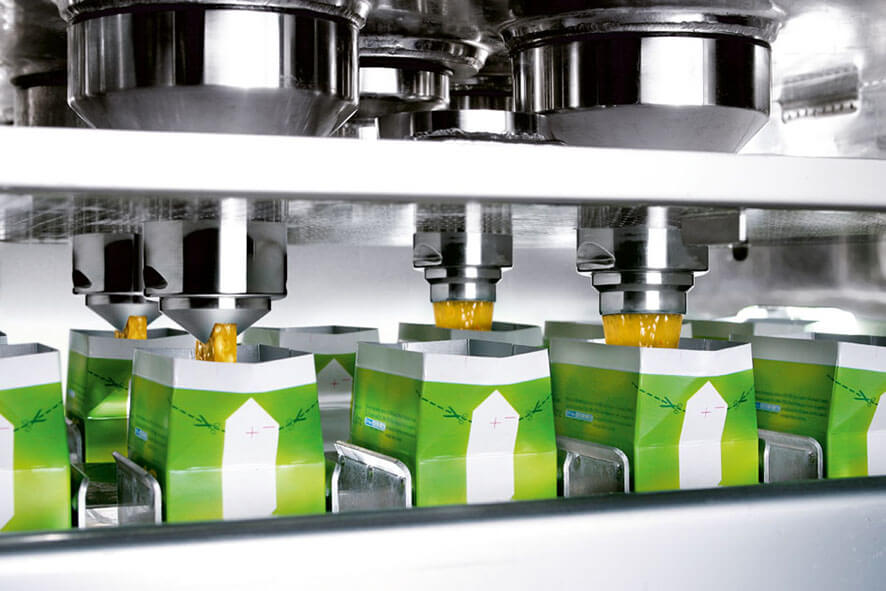The food and beverage industry is no stranger to innovation, from creating new recipes and flavours to getting products to the shelf quickly in the face of strict regulations, but the fact remains that it’s a tough time for the industry as a whole.
Producers are facing competitive pressures, supply chain complexities and ever-shorter production cycles. At the same time, consumers are seeking more innovative, convenient products that are not only safe and sustainable but also affordable and differentiated. They’re also spending less than they use to 20 years ago (In other words, they need to do more for less).
It’s because of these reasons Min-Kin Mak, deputy vice president of Corporate Development and Digital Transformation for SIG, believes the food and beverage industry is ripe for a digital awakening. So naturally, Information Age jumped at the opportunity to chat with him about SIG’s digital transformation journey.
For those who don’t know, SIG is a major provider of packaging systems and solutions for the food and beverage industry; its customers fill more than 10,000 unique products into SIG packaging across 65 countries worldwide. In 2017 alone, SIG produced 33.6 billion carton packs.
See also: What is digital transformation in business – Everything you need to know
Transform by necessity
From from the get-go, SIG was adamant against allowing technology alone to dictate their transformation. According to Mak, all transformation had to be justified by a business case.
“We tried to be as specific as possible when figuring out what we wanted to achieve and in what business area, then we tried to figure out how to do it,” explained Mak. “There is so much technology out there but technology is of no use unless you clearly identify a specific use case.”
This diligent approach led to a lot of detailed pre-planning.
“We identified about 180 ideas of what we could do in the digital realm,” said Mak. “We then evaluated them and ultimately brought it down to 14 projects and eventually we broke them up into different stages and we decided to take these projects one after the other, we called this our strategic digital roadmap.”
Becoming service providers
According to Mak, defining and optimising their service-based business-model was a key ambition for SIG’s digital transformation.
“It was important for us because service is the very aspect where we make sure that we serve our customers’ interests, which is to have as high productivity and as high of an output as possible,” said Mak.
But as Mak explained, this came with a lot of digital complexities. SIG’s service focused around a core maintenance strategy; therefore, they needed new tools.
“We wanted to know what was going on inside our machines that run at our customer sites, we knew that collecting machine-generated data was the way forward,” said Mak. “This meant that we were looking for a solution that would combine and smarten-up our application performance management (APM) capabilities so that eventually we would have predictive maintenance that would automatically manage and influence our servicing strategy.”
See also: Reinventing the wheel – servitization and the automotive industry – As automobile manufacturers continue to wrap subscriptions around their products, Information Age analyses servitization and the automotive industry and what it means for IT
Partner ecosystem
SIG looked to GE Digital’s APM and ServiceMax for help. The partnership aimed to help SIG to build an end-to-end digital platform to bring a new level of insight and data-driven intelligence to its customers worldwide – helping them and SIG transform how they predict, manage and service the entire lifecycle of SIG filling lines.
By automatically collecting and analysing asset data – tapping into billions of data points across its operations globally in real time – SIG and their customers could move beyond traditional asset monitoring and predictive service models to reimagine their supply chain, enhance quality control technologies and evolve their portfolio mix.
Mak added: “The value for the customer is very clear because they’re interested in getting as much output as possible. We are confident that we will be able to increase our technical uptimes to a degree that will make it attractive for our customers. The idea is to come up with new offerings were machines run at an optimum OEE for a flat rate.
“Many of our customers have agreed on a flat rate model already. But once we have introduced the predictive maintenance, the business will turn OEE up even more, meaning that if it’s implemented at our customer sites, it makes it more compelling for our customers adopt it.”
From the start, it appears SIG successfully managed to shape technology around their business needs. They created new opportunities and defined a new business model. As such, SIG has established themselves as leaders in the transformation of food and beverage packaging, and opened up a new chapter for themselves.
See also: Traditional companies need digital partners – but are they getting them? – IT and Tech companies are not capitalising on today’s digital partnership opportunities – says BearingPoint survey. They understand the value of partner ecosystems but are doing very little







